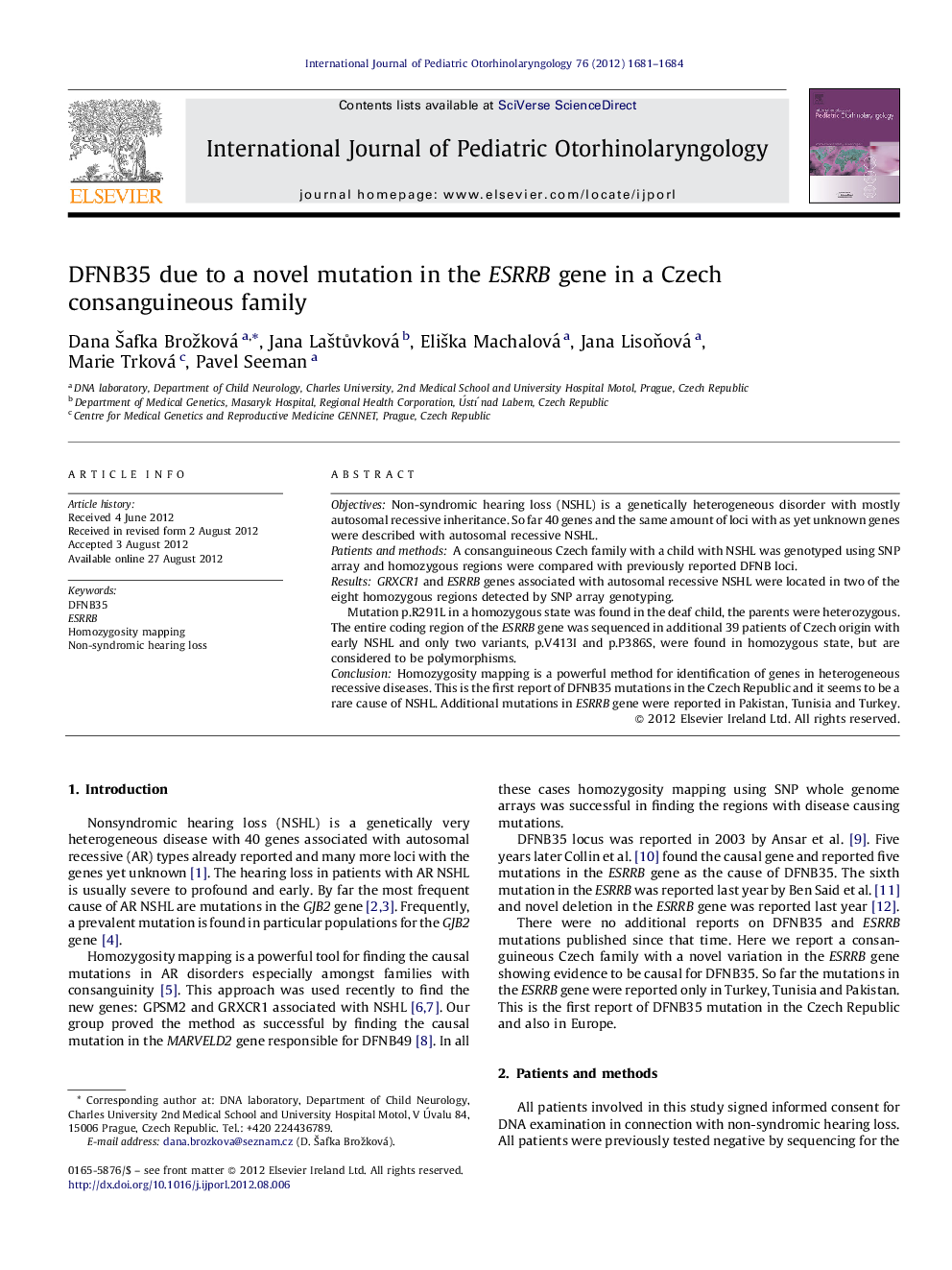| Article ID | Journal | Published Year | Pages | File Type |
|---|---|---|---|---|
| 4112336 | International Journal of Pediatric Otorhinolaryngology | 2012 | 4 Pages |
ObjectivesNon-syndromic hearing loss (NSHL) is a genetically heterogeneous disorder with mostly autosomal recessive inheritance. So far 40 genes and the same amount of loci with as yet unknown genes were described with autosomal recessive NSHL.Patients and methodsA consanguineous Czech family with a child with NSHL was genotyped using SNP array and homozygous regions were compared with previously reported DFNB loci.ResultsGRXCR1 and ESRRB genes associated with autosomal recessive NSHL were located in two of the eight homozygous regions detected by SNP array genotyping.Mutation p.R291L in a homozygous state was found in the deaf child, the parents were heterozygous. The entire coding region of the ESRRB gene was sequenced in additional 39 patients of Czech origin with early NSHL and only two variants, p.V413I and p.P386S, were found in homozygous state, but are considered to be polymorphisms.ConclusionHomozygosity mapping is a powerful method for identification of genes in heterogeneous recessive diseases. This is the first report of DFNB35 mutations in the Czech Republic and it seems to be a rare cause of NSHL. Additional mutations in ESRRB gene were reported in Pakistan, Tunisia and Turkey.
